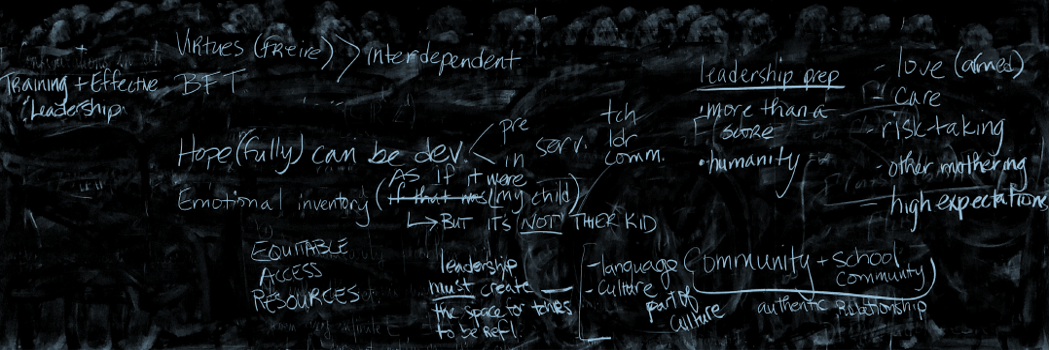“Possession—the act necessary to lay the basis for rights in property—was defined to include only the cultural practices of Whites. This definition laid the foundation for the idea that whiteness—that which Whites alone possess—is valuable and is property.” (Harris,1993 as cited in Ladson-Billings & Tate, 1995, p.59)
Several of the concepts uplifted in the articles by Ladson-Billings & Tate (1995) and by Dixson & Rousseau Anderson (2018) resonated with my observations working in the education and non-profit sectors over the past 15 years, as well as my own experience as a Black student. One in particular that struck a resounding chord was the discussion of whiteness as property. In both articles, four different “property functions of whiteness,” as proposed by Harris (1993) are highlighted and explored. I could easily identify examples for each one, but will zoom in on “rights of disposition” and “the absolute right to exclude” for this particular post.
Rights of Disposition
Ladson-Billings & Tate (1995) note that “When students are rewarded only for conformity to perceived “white norms” or sanctioned for cultural practices (e.g., dress, speech patterns, unauthorized conceptions of knowledge), white property is being rendered alienable.” (Ladson-Billing & Tate, 1995, p.59) Attending an all-black elementary school with an exclusively-white administration and teaching staff, as well as attending a predominately-white middle and high school, the policing of the bodies, behaviors and speech of Black students and families was rampant. I also witnessed (and unfortunately inflicted) some of the same policing as a new classroom teacher working for “no excuses” charter school in Brooklyn. It took years of work (and continued work) to unlearn internalized notions of respectability, education for the sake of competition and success in a capitalist society, and assumed cultural superiority of dominant society. I still see the pervasiveness in how Black and Brown children are policed in our school-based programs.
An area of my current work where rights of disposition is prominent, is in discussions around Social Emotional Learning. While SEL has been one of the hot topics and education waves for a while now, conversations about SEL through a lens of racial justice and equity are more recently taking off. Critique of the popular standards and models for SEL focuses on the fact that they lack cultural-responsiveness and emphasize white and western notions of behavior as the ideal to be reached. In my own workshops on SEL, I hazard after school staff against using SEL-focused practices and lessons to control and police children’s natural and valid emotional responses and modes of expression This is particularly important for Black and Latinx children whose emotional responses and modes of expression are punished and criminalized. I also challenge them not to confuse developmental-supportive social and emotional learning with behavior management, which is almost exclusively about control and policing vs wellness and well-being.
The Absolute Right to Exclude
According to Ladson-Billings & Tate (1995), “Whiteness is constructed in this society as the absence of the “contaminating” influence of blackness.” (Ladson-Billings & Tate, 1995, p.60) I have seen this show up in the treatment of Black educators, counselors and families, the absence of accurate and thorough teaching of historical and current events, the exclusion of BIPOC authors and stories from ELA curriculum and schools booklists, and in the current backlash from teachers and parents against the Black Lives Matter at School Week of Action programming, principles and demands.
The “absolute right to exclude” connected naturally to the function of counternarrative for me. Lawrence (1995) notes that, “we must learn to trust our own senses, feelings, and experiences, to give them authority, even (or especially) in the face of dominant accounts of social reality that claim universality”. (Lawrence, 1995 as cited by Dixson & Rousseau Anderson,2018, pg.4) If possession is a characteristic of whiteness and this manifests as “ideological”, “discursive”, and “representational” racism (Cole, 2019), then it makes sense that emphasis would be placed on owning, controlling and telling our own stories. I see counternarrative at play in my own work in the literature and literacy world through movements like #ownvoices and #disrupttexts movements.




hi Tarilyn: I am so happy to read your comments about SEL and the work you are doing to help afterschool staff use culturally responsive, equity-oriented approaches. It’s so odd to me that SEL is seen as an innovation, given that students’ social and emotional development was always part of the work, whether schools recognized it or not. This is a sign of how seriously many schools lost their way under No Child Left Behind and other neoliberal policies. I remember reading a New York Times op ed during the heyday of NCLB entitled “No Emotion Left Behind,” in which the authors stated that there were over 250 studies showing that good social and emotional learning supports academic achievement–whereas NCLB set up a competition between these aspects of the work (calling for a “laser-like focus on instruction” to the detriment of social, emotional, and physical development ). But I agree that we are not out of the woods yet. The new SEL carries much NCLB and other baggage, including implicit bias, as you point out, with its attention to control, rather than developmental, issues. I loved Gloria Ladson-Billings question toward the end of the Teachers College video–something to the effect of “Didn’t any of you ever take a course on child and adolescent development?”